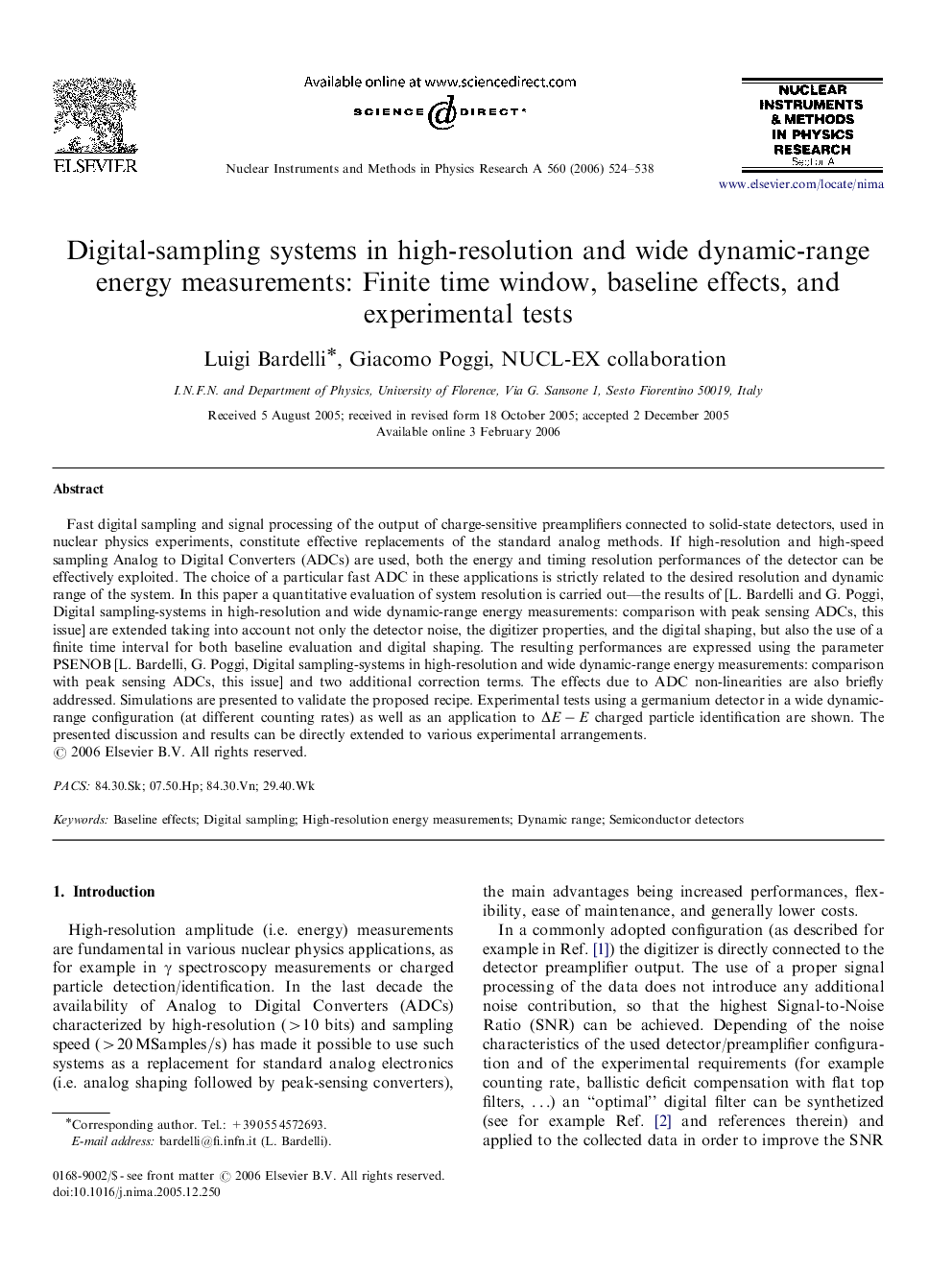| Article ID | Journal | Published Year | Pages | File Type |
|---|---|---|---|---|
| 1833115 | Nuclear Instruments and Methods in Physics Research Section A: Accelerators, Spectrometers, Detectors and Associated Equipment | 2006 | 15 Pages |
Fast digital sampling and signal processing of the output of charge-sensitive preamplifiers connected to solid-state detectors, used in nuclear physics experiments, constitute effective replacements of the standard analog methods. If high-resolution and high-speed sampling Analog to Digital Converters (ADCs) are used, both the energy and timing resolution performances of the detector can be effectively exploited. The choice of a particular fast ADC in these applications is strictly related to the desired resolution and dynamic range of the system. In this paper a quantitative evaluation of system resolution is carried out—the results of [L. Bardelli and G. Poggi, Digital sampling-systems in high-resolution and wide dynamic-range energy measurements: comparison with peak sensing ADCs, this issue] are extended taking into account not only the detector noise, the digitizer properties, and the digital shaping, but also the use of a finite time interval for both baseline evaluation and digital shaping. The resulting performances are expressed using the parameter PSENOB [L. Bardelli, G. Poggi, Digital sampling-systems in high-resolution and wide dynamic-range energy measurements: comparison with peak sensing ADCs, this issue] and two additional correction terms. The effects due to ADC non-linearities are also briefly addressed. Simulations are presented to validate the proposed recipe. Experimental tests using a germanium detector in a wide dynamic-range configuration (at different counting rates) as well as an application to ΔE-EΔE-E charged particle identification are shown. The presented discussion and results can be directly extended to various experimental arrangements.
